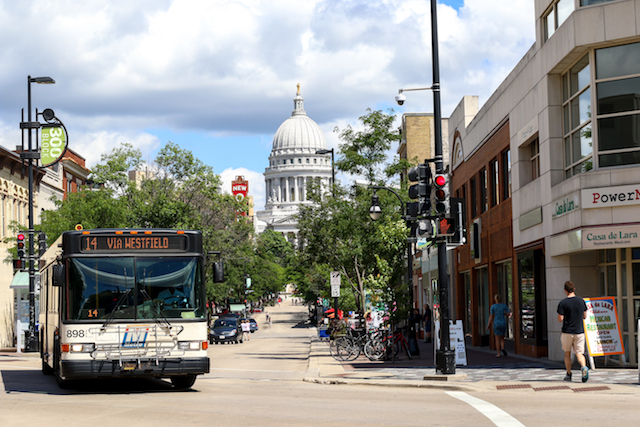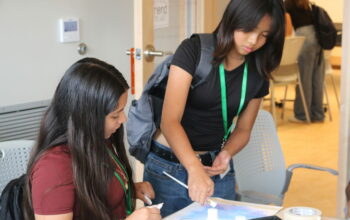As of July 1, 2018, Madison has revived at least two aspects of its public transportation system that it had between 1968 and the early 1990s, which is both good and bad. The good is that the city once more has a functioning Department of Transportation with a director. The bad is that citizen participation is being overly limited at a time when alders need more, not less, input from constituents.

Let's begin with a little bit of history. The City of Madison established a transportation department (MDOT) back in 1968. How residents move around is a primary concern of government and the federal cabinet has always had a secretary of transportation. Many state and city governments also have departments of transportation that are multimodal in purview. Madison was no exception. However, when it established MDOT, there seemed little interest in transportation despite the city’s acquisition of what had been a private bus company. At this time, people were enamored with the car and the opportunities it provided.
Citizen oversight was limited to one transportation commission that dealt with everything. By the 1980s; however, the commission added a pedestrian-bicycle subcommittee, which included the requirement that one of its members was required to sit on the plan commission.
Fast-forward to the early 1990s when MDOT's director retired. He was not replaced. Instead of hiring a new director, the city hired a talented young traffic engineer to head a new traffic engineering unit. This was the start of the "horizontal team approach" era in which the heads of the different transportation units (i.e. the transit agency, parking utility, traffic engineering) worked together to craft and implement policy. When a problem occurred with the manager of the parking utility some years ago, the head traffic engineer agreed to be the utility’s interim leader, even as many of the day-to-day issues were actually handled by the assistant manager.
The modest changes to citizen oversight in the 1980s and early 1990s seem quaint in light of what happened after MDOT ceased to exist in 1997. For one, the transportation commission split into two: a transit and parking commission and a full-blown pedestrian/bicycle/motor vehicle commission (in contrast to it only being a subcommittee). The transit and parking commission itself added an ADA paratransit oversight subcommittee and later both a parking council for people with disabilities subcommittee, and a contracted services oversight subcommittee.
Also around this time, leaders started a joint subcommittee of the plan commission and the transit and parking commission. Eventually called the “long range transportation planning committee,” it was comprised of members of the Plan Commission, the Transit and Parking Commission, the Pedestrian/Bicycle/Motor Vehicle Commission, the Board of Public Works, and the regional transportation planning board.
Such expansion was a reflection of the need to better integrate different travel modes than was possible with separate committees overseeing different transportation agencies managed through a “horizontal team approach.” By some estimates, there were over 50 seats on transportation-related oversight committees although the same person might occupy several seats.
A wave of dissatisfaction with the situation crested in 2015. There was need for another overhaul that would bring Madison back to the idea of one department of transportation that dealt simultaneously with multiple travel modes, overseen by fewer committees advisory to the Common Council.
The Common Council Executive Committee created an Ad Hoc Transportation Ordinance Review Committee that met for a year and a half starting in March of 2016.
The ad hoc transportation committee reviewed past history and wrestled with whether the department would have a director or a Transportation Policy and Planning Manager, whether there would be two or three main oversight committees, as well as what the membership and functions of those committees would constitute. Most agreed that the cross-fertilization of different perspectives on transportation from both within and outside the city of Madison was essential.
The ad hoc committee ultimately decided that effective July 1, 2018, there would be a transportation department director who would be the principal staff for a long range Transportation Policy and Planning Board (see Ordinance 3.14 for specifics). Tom Lynch now fills this role as the new director.
The ad hoc committee also decided on two rather than three primary oversight committees, also effective July 1, 2018. One committee is a nine-member Transportation Policy and Planning Board (TPPB) that deals with issues of land use and transportation, replacing the former Long Range Transportation Planning Committee (see Ordinance 33.55 for specifics). One of its members is on the Plan Commission. Another is a “regional representative,” an elected official of a political subdivision that contracts with Metro Transit for transit services. Three members are alders. That leaves four regular slots for city residents. There is no mandatory representation from the regional transportation planning board or the Board of Public Works.
The second primary transportation committee effective July 1, 2018 is the Transportation Commission (see Ordinance 33.56). It deals with all modes of transportation as did the original transportation commission back in 1968. Nine voting members are expected to oversee transit, parking, bicycle and pedestrian issues. As it is expected to handle as much material as was handled earlier by two separate commissions, it meets at least twice a month.
Two members of the Transportation Commission must be alders; one member must be “knowledgeable of equity issues and the needs of marginalized communities;” one must be “knowledgeable of issues facing people with disabilities;” one must be “knowledgeable of issues facing users of the city's on- and off-street parking system;” one must use the bicycle as the primary mode of transportation; one must use walking as a primary mode of transportation and one must use transit as a primary mode of transportation. After all that, “preference should be given to appointing people of color and people of low income.” Finally, “at least one Common Council member and one resident member must also be a member of the Transportation Policy and Planning Board.”
The frequency of Transportation Commission meetings may better democratize deliberation on different modes of transportation, but it also places a huge burden on fewer committee members. Madison alders often burn out after a few terms because of the heavy workload. Few people can devote so much personal time to really covering the vast amount of transportation material.
Given ideas about participatory democracy and inclusivity, the new commission structure may be erring in the direction of over-compression with only eleven non-alder members whereas the former model erred in the direction of over-expansion with over 50 such members.
The ideal might be to maximize both integration and inclusivity with a number somewhere in between. After trying the current reorganization for a year, do not be surprised to see changes that try to better balance those values.




